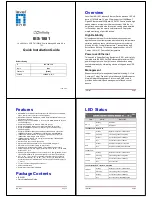
Meeting Site Requirements
Extreme Networks Consolidated "i" and "e" Series Hardware Installation Guide
37
NOTE
Note that automatic shutdown is based solely on the power supply temperature sensor and is not based
on the temperature sensor of the MSM. The power supply temperature sensor readings are not visible
through the ExtremeWare command set. This protection is designed to prevent thermal runaway
conditions, and does not ensure the protection of the system modules. Internal temperatures above
55° C (+/- 5° C) can produce a decline in the long-term reliability of the system overall.
The system will recover automatically once the temperature has dropped to 80° C as tracked by the
independent temperature sensor within the power supply. The temperature sensor remains active when
the system is in a shutdown state.
System Alarms in an Overheating Condition.
Extreme supports the following SNMP alarms to
report overheating conditions:
• Over Temperature Alarm:
This trap sends notification of an overheating condition, but takes no
action. The alarm threshold is fixed at 55° C; however, you can control the alarm by turning it ON or
OFF.
• Overheat:
This is a trap sent before the system is taken offline. It indicates that the onboard
temperature sensor has reported an overheating condition. The system will shut down until the unit
has cooled sufficiently. A cold start trap will be issued when the unit has come back online.
You can use the ExtremeWare command set to capture temperature logs on an hourly basis. However,
the traps on the system are not configurable.
You can use these traps to trigger an SNMP management platform to react with an external program to
perform programmed actions to remedy the situation. For example, you could shut down power by
using a remote power management device available from a third party. The actions performed depend
on both the capability of the management platform and any third-party device that can be set to control
the flow of power to the switch.
Monitoring Overheating Symptoms.
In general, any system reporting temperatures above 40° C
should be closely monitored. You should take the following actions:
•
Use the ExtremeWare command set to enable temperature logging and monitor for any rises or
decline in temperature in the system logs.
•
Ensure proper environment conditions as described earlier in this section.
Environmental conditions with especially poor airflow can severely impact system performance.
Numerous racks to the left and right of the system being monitored can result in the system being
cooled by the exhaust of another system or influenced by the heat emitted from the adjoining
systems. In addition, enclosed racks can prevent proper airflow. Poor environment placement of this
type can typically result in as much as a 10° C increase to the ambient temperature (that is, the
temperature of the environment around the switch) being fed to the system.
•
Check airflow into and out of the system, ensuring appropriate spacing for proper air circulation.
•
Verify that any additional equipment installation has not blocked airflow.
•
Check fans to ensure that there has not been a slowdown or failure of fan operation.
•
Ensure that proper blank faceplates are used for all open slots.
Openings in a chassis can result in air eddies in the system, resulting in regions of the system
operating at higher temperatures.
Summary of Contents for Summit 200-24
Page 18: ...18 Extreme Networks Consolidated i and e Series Hardware Installation Guide Preface...
Page 19: ...Part 1 Common Features...
Page 20: ......
Page 25: ...Part 2 Site Planning...
Page 26: ......
Page 56: ...56 Extreme Networks Consolidated i and e Series Hardware Installation Guide Site Preparation...
Page 57: ...Part 3 Summit Switch...
Page 58: ......
Page 137: ...Part 4 Alpine Switch...
Page 138: ......
Page 213: ...Part 5 BlackDiamond Switch...
Page 214: ......
Page 303: ...Part 6 Switch Operation...
Page 304: ......
Page 307: ...Part 7 Appendixes...
Page 308: ......
Page 386: ...386 Extreme Networks Consolidated i and e Series Hardware Installation Guide...
















































